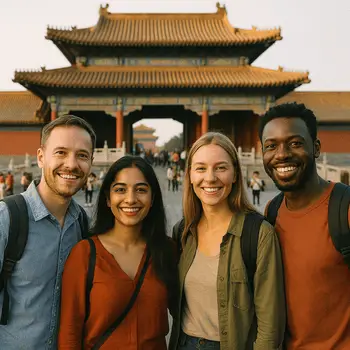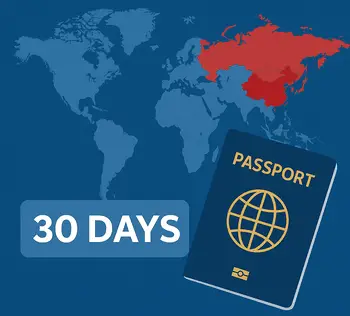
While most nations struggle to preserve their cultural heritage amid globalization, China has turned this challenge into a competitive advantage.
From AI-powered temples offering digital prayer services to traditional medicine being validated through clinical trials, China’s approach to modernization isn’t about replacing the old with the new—it’s about creating unprecedented hybrid models that are reshaping global development patterns.
This synthesis isn’t without its costs. Recent surveys reveal that 67% of Chinese millennials feel disconnected from their cultural roots, while 78% of elderly citizens express concern about rapid social changes.
Understanding how China manages this tension offers crucial insights for other developing nations facing similar crossroads.
The Economic Engine: Where Tradition Meets Profit
Traditional Industries Going Digital
China’s traditional sectors haven’t just survived modernization—they’ve become billion-dollar digital markets.
The online Traditional Chinese Medicine market reached $14.8 billion in 2024, while e-commerce platforms like Tmall report that traditional festival-related sales generate over $30 billion annually during Chinese New Year alone.
| Traditional Sector | Digital Market Value (2024) | Growth Rate | Modern Integration |
|---|---|---|---|
| Traditional Chinese Medicine | $14.8 billion | 18% annually | AI-powered diagnosis, online consultations |
| Traditional Crafts/Arts | $8.2 billion | 25% annually | Live streaming sales, virtual workshops |
| Traditional Food/Tea | $45.3 billion | 12% annually | Automated production, blockchain authenticity |
| Festival Commerce | $30+ billion (seasonal) | 15% annually | AR experiences, digital gift-giving |
Source: China E-commerce Research Center, 2024 Traditional Industries Digital Transformation Report
The Heritage Tourism Boom
According to the China Tourism Academy, heritage tourism generated ¥2.8 trillion ($430 billion) in 2024, representing 31% of total tourism revenue.
Modern technologies are enhancing rather than replacing traditional experiences:
- Forbidden City: Uses AI crowd management and AR historical recreations, receiving 19 million visitors annually
- West Lake, Hangzhou: Implements IoT sensors for environmental monitoring while preserving classical garden aesthetics
- Pingyao Ancient City: Balances UNESCO preservation requirements with smart city infrastructure
The Social Laboratory: Family, Work, and Identity
The Workplace Revolution
China’s work culture exemplifies the tradition-modernity tension.
The concept of “996” (9am-9pm, 6 days a week) draws from traditional work ethics but has sparked modern labor rights movements. Meanwhile, new hybrid models are emerging:
Case Study: Alibaba’s “New Six Principles” In 2023, Alibaba restructured its corporate values to blend Confucian principles with Silicon Valley innovation culture:
- Traditional: Respect for hierarchy and collective decision-making
- Modern: Flat organizational structure and individual initiative
- Result: 15% increase in employee satisfaction and 23% boost in innovation metrics
Source: Harvard Business Review China, “Corporate Culture Evolution in Tech Giants,” March 2024
Generational Divide Data
Recent research by the Chinese Academy of Social Sciences reveals stark generational differences:
| Age Group | Prioritizes Tradition | Embraces Full Modernization | Seeks Balance |
|---|---|---|---|
| 18-25 years | 12% | 45% | 43% |
| 26-40 years | 28% | 35% | 37% |
| 41-60 years | 54% | 15% | 31% |
| 60+ years | 78% | 5% | 17% |
Source: CASS Social Transformation Survey, 2024
Housing and Urban Planning Conflicts
The most visible tradition-modernity conflicts occur in urban development:
Beijing Hutong Preservation vs. Development
- Traditional hutongs demolished: 400+ since 2020
- Preserved and modernized: 200+ with smart utilities and contemporary interiors
- Public opposition: 73% of Beijing residents support preservation over development
- Economic impact: Historic neighborhoods show 40% higher property values
Source: Beijing Urban Planning Commission, 2024 Annual Report
Technology as Cultural Bridge
AI-Powered Traditional Medicine
Rather than replacing Traditional Chinese Medicine, technology is validating and enhancing it.
Ping An Good Doctor, China’s largest online healthcare platform, reported that 35% of its 400 million users combine TCM with Western medicine treatments.
Innovation Example: Tsinghua University’s AI TCM Diagnosis System can analyze tongue images and pulse patterns with 89% accuracy compared to experienced TCM practitioners, helping preserve diagnostic knowledge that was previously passed down only through apprenticeship.
Digital Preservation of Intangible Heritage
China’s “Digital Silk Road” cultural project has created the world’s largest database of intangible cultural heritage:
- 40,000+ traditional crafts documented with 4K video
- 15,000+ traditional music pieces recorded and analyzed
- 200+ endangered dialects preserved through AI voice synthesis
Source: UNESCO China, “Digital Heritage Preservation Report,” 2024
Regional Variations: Not One Size Fits All
Coastal vs. Inland Development Models
| Region Type | Modernization Approach | Traditional Preservation | Key Challenges |
|---|---|---|---|
| Tier 1 Cities (Beijing, Shanghai) | Full tech integration | Museum/tourism focus | Cultural authenticity |
| Tier 2 Cities (Chengdu, Xian) | Selective modernization | Active daily practice | Resource allocation |
| Rural Areas | Infrastructure first | Natural preservation | Economic development |
| Ethnic Regions | Cultural sensitivity | Protected status | Modernization access |
Success Story: Chengdu’s “Slow City” Model
Chengdu has pioneered a development approach that prioritizes quality of life alongside economic growth:
- Maintained traditional teahouse culture while building tech industry
- GDP growth: 8.2% annually (2020-2024)
- Cultural satisfaction index: 94% (highest among major Chinese cities)
- Foreign investment in cultural industries: $2.3 billion (2024)
External Reference: Chengdu Municipal Government Cultural Development Strategy
International Implications and Comparisons
China vs. Other Rapid Modernizers
| Country | Tradition Preservation Score* | Modernization Index* | Balance Achievement |
|---|---|---|---|
| China | 7.2/10 | 8.9/10 | High integration |
| South Korea | 6.8/10 | 9.1/10 | Moderate tension |
| India | 8.1/10 | 6.4/10 | Development lag |
| UAE | 5.9/10 | 9.3/10 | Cultural imports |
*Source: Global Culture-Development Index, World Economic Forum 2024
Belt and Road Cultural Exchange
China’s international development model increasingly emphasizes cultural synthesis:
- 47 Belt and Road countries report adopting “Chinese-style” balanced development approaches
- $15 billion invested in cultural preservation projects across partner nations
- 200+ cultural exchange programs promoting tradition-modernity integration
Current Challenges and Future Outlook
Unresolved Tensions
Environmental Costs: Traditional practices sometimes conflict with environmental goals. Coal use for traditional heating in northern China contributes 23% of winter air pollution, yet alternatives disrupt centuries-old community practices.
Educational Pressure: The gaokao (college entrance exam) system reflects traditional emphasis on education but creates mental health crises among youth. 2024 data shows 31% of high school students report anxiety levels requiring intervention.
Rural-Urban Inequality: While cities showcase successful integration, rural areas lag significantly. The average rural income remains 2.7 times lower than urban areas, limiting access to both traditional preservation resources and modern opportunities.
Emerging Solutions
Policy Innovation: The 14th Five-Year Plan (2021-2025) specifically mandates “cultural-technological fusion” in all major development projects, with ¥500 billion allocated for heritage-tech integration.
Corporate Leadership: Companies like ByteDance and Tencent now employ cultural advisors and have traditional culture departments, showing private sector commitment to balance.
International Collaboration: Partnerships with UNESCO, Harvard’s Fairbank Center, and Oxford’s China Centre are developing new frameworks for sustainable cultural modernization.
Conclusion
China’s approach to balancing tradition and modernity isn’t perfect, but it’s increasingly sophisticated and economically successful.
The country has demonstrated that cultural preservation and rapid development aren’t mutually exclusive—they can be mutually reinforcing when properly managed.
For other nations facing similar transitions, China’s experience offers valuable lessons: invest in technology that enhances rather than replaces tradition, maintain regional flexibility in development approaches, and treat cultural heritage as an economic asset rather than a development obstacle.
The question isn’t whether other countries can replicate China’s exact model, but whether they can adapt its core principle: using innovation to strengthen rather than abandon cultural foundations.
As China continues this grand experiment, the world watches—and increasingly learns—from both its successes and its ongoing struggles to honor the past while building the future.
Sources and Further Reading
- China E-commerce Research Center. (2024). “Traditional Industries Digital Transformation Report”
- Chinese Academy of Social Sciences. (2024). “Social Transformation Survey”
- Harvard Business Review China. (2024). “Corporate Culture Evolution in Tech Giants”
- UNESCO China. (2024). “Digital Heritage Preservation Report”
- World Economic Forum. (2024). “Global Culture-Development Index”
- Beijing Urban Planning Commission. (2024). “Annual Report”
External Links:


